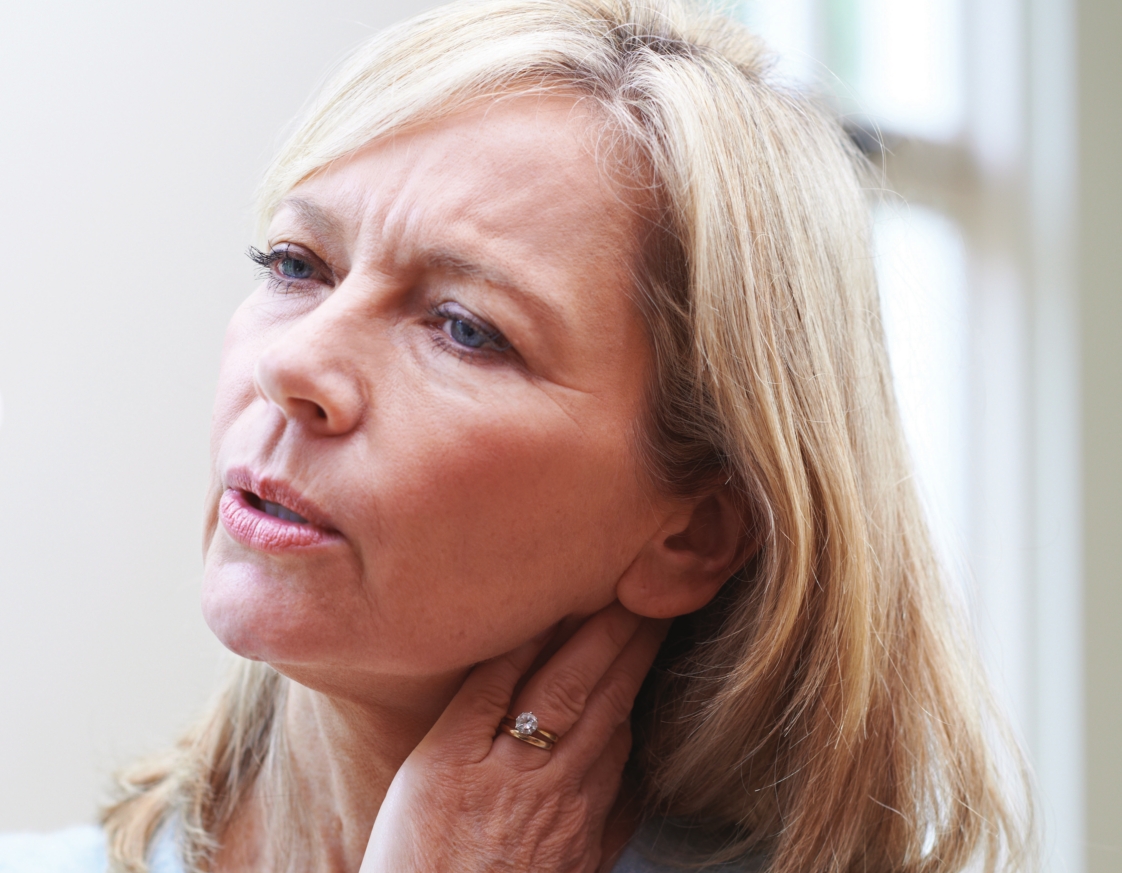MENOPAUSAL SYMPTOMS


Management can be a daunting task
Menopause is the end of menstruation and is caused by changes in hormone production by the ovaries. By definition, this is one year after the last menstrual period. Menopause occurs on average around age 51 in North America. Changes associated with menopause begin a few years prior to complete cessation of menses. This time is referred to as the menopause transition and/or perimenopause.
Vasomotor symptoms (VMS), such as hot flashes, and vaginal symptoms are the leading issues associated with menopause. Hot flashes are the sensation of heat in the upper body, face and chest. They are associated with chills, flushing, perspiration, anxiety and sometimes heart palpitations. Depression may be associated with menopause as well. Night sweats may also interfere with sleeping patterns and cause chronic sleep disruptions.
VMS can be very troubling and affect up to 50-80 percent of U.S. women. Symptoms peak about one year after the last menstrual period. Some women have mild symptoms, but others can be very affected by the physiologic changes. Many individuals have more than 10 hot flashes per day. Earlier information stated that the normal duration of VMS was up to two years, but more recent data gives a median duration of four to 10 years.
The most effective treatment for VMS is systemic with estrogen.
This is referred to as hormone replacement therapy (HRT). Systemic therapy is given as oral, transdermal or intradermal pellets. Estrogen is either given alone or in combination with progesterone (combined therapy). If the patient has not had a hysterectomy, combined therapy is indicated. This prevents endometrial growth, bleeding and possible endometrial cancer. Patients who have had a hysterectomy are treated with estrogen only.
There are small risks associated with systemic combined HRT. Large studies have shown a slightly increased risk of breast cancer, heart disease, stroke and blood clots (DVT). When estrogen is used alone for patients who have had a hysterectomy, there is not an increased risk of breast cancer, but there is still a risk of DVT. More recent studies show possible cardiac benefits when HRT is started within 10 years of menopause. The decision to stop HRT is based on the patient’s symptoms and risks to benefits ratio, not the patient’s age. Some individuals will stop treatment in three to five years. Others may choose to continue therapy beyond 65 years of age.
Other hormonal medications are sometimes used to treat VMS. Compounded hormones (bioidentical hormones) may currently lack FDA approval but have been successful when standard treatment has failed. Progesterone alone is not considered first-line treatment for VMS. Testosterone has shown limited benefits for VMS, but it may improve sexual function.
Non-hormonal medications are available to individuals who have had breast cancer, other hormone-related cancers, or for those who do not desire HRT. Low doses of some antidepressant medications have been helpful. Clonidine, an older antihypertensive, has been used for VMS. Gabapentin, a seizure medication, has also been used for many indications including menopausal symptoms.
Vaginal atrophy (thinning of vaginal lining) results from lack of estrogen associated with menopause. Approximately 10-40 percent of women will notice symptoms of vaginal atrophy including vaginal dryness, irritation, itching, infection and painful intercourse. These changes are caused by the loss of elasticity, thinning of tissue and shortening of the vagina. This can lead to quality of life issues by decreasing self-esteem and sexual intimacy. A physical exam and specific tests can confirm atrophic vaginitis.
Vaginal symptoms of atrophic vaginitis are treated with estrogen.
Local therapy can be applied in the vagina and is very effective. It is the most used treatment. Local estrogen is used as a cream, ring or tablet. Very low doses work well and are easily applied. Local treatment is safe and usually does not cause bleeding or increase risk of endometrial cancer.
New medications have recently become available for atrophic vaginitis. Intrarosa is a vaginal suppository that stimulates the vagina to produce its own natural hormones. Osphena is an oral medication that increases estrogen activity in the vagina.
In women who have had breast cancer or endometrial cancer, non-hormonal treatment should be considered firstline treatment for vaginal atrophy. Nonestrogen moisturizers and lubricants can help vaginal symptoms related to menopause. Moisturizers improve dryness, balance the pH and reduce vaginal itching.
In summary, most women will benefit from treatment if menopausal symptoms are significant to warrant medication. For the majority of women, the benefits of treatment outweigh the risks of HRT use. One should use the lowest effective dose of HRT, and duration of use should be determined by the needs of each individual.
Dr. E.B. Robinson is a gynecologist at Highland Clinic. He provides gynecologic services for women of all ages from adolescence to menopause. Dr. Robinson focuses on wellwoman care, preconceptual counseling, cervical cancer prevention – HPV, treatment for perimenopause through menopause and osteoporosis. He is accepting new patients and can be reached at (318) 798-4400, located at 1455 East Bert Kouns Industrial Loop, Suite 305, Shreveport, LA 71105. Visit http://www.highlandclinic.com/staff/e-brobinson-m-d for more information.
